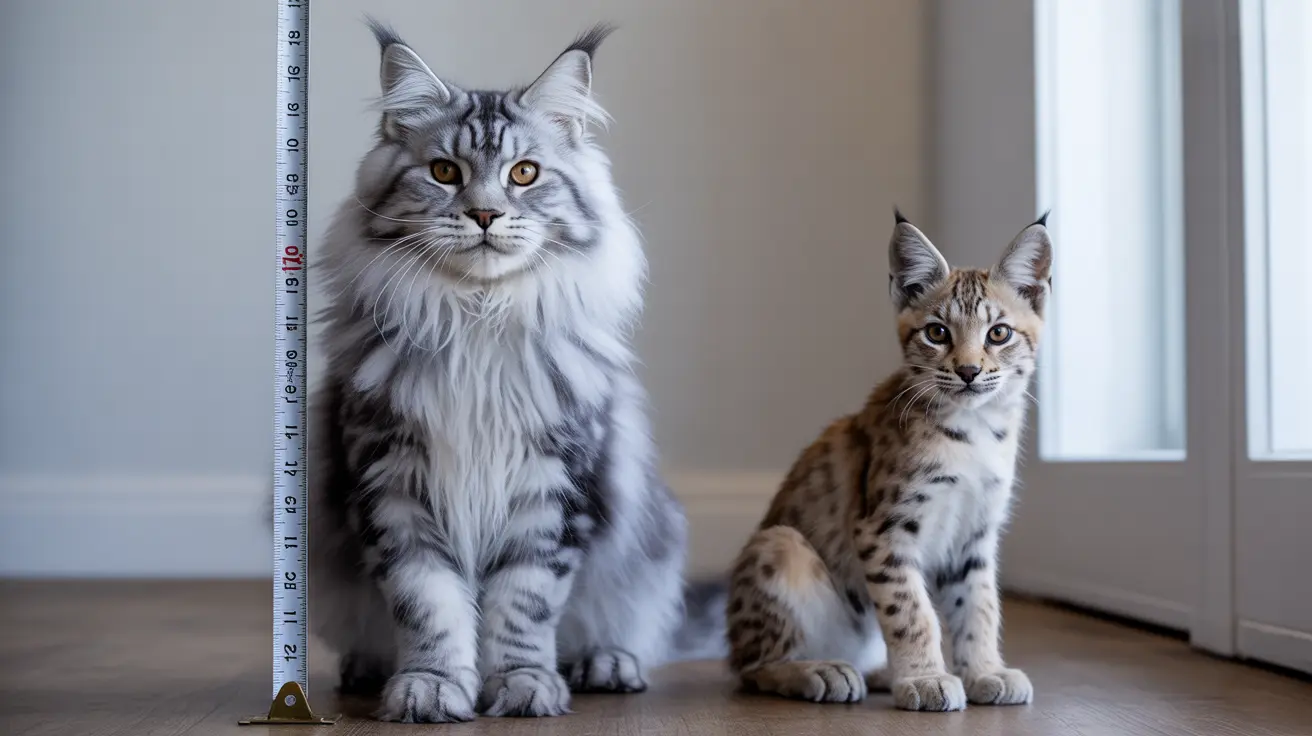When comparing bobcats and house cats, size is one of the most striking differences between these feline relatives. While both belong to the Felidae family, bobcats are significantly larger and more muscular than their domestic counterparts. This comprehensive guide explores the key size differences and physical characteristics that set these two cats apart.
Physical Dimensions: How Bobcats Measure Up
Bobcats are substantially larger than domestic cats in every measurable way. Adult bobcats typically weigh between 15-40 pounds (6.8-18 kg) and can reach lengths of up to 37 inches from nose to tail. Male bobcats are particularly impressive, often weighing between 20-35 pounds, while females are slightly smaller.
In contrast, the average house cat weighs between 5-15 pounds (2.3-7 kg) and measures around 18 inches in length. This means a typical bobcat can be more than twice the size of a domestic cat.
Key Structural Differences
Height and Build
Bobcats stand considerably taller than house cats, measuring 16-23 inches at the shoulder compared to the 9-10 inches typical for domestic cats. Their build is notably more muscular, with powerful hind legs designed for hunting and pouncing on prey in the wild.
Distinctive Features
The most noticeable difference is the tail length. Bobcats have their characteristic "bobbed" tail, measuring just 4-7 inches, while house cats sport longer tails averaging 11-12 inches. Bobcats also have distinctive tufted ears and more pronounced facial ruffs, setting them apart from their domestic relatives.
Behavioral and Physical Capabilities
The size difference between bobcats and house cats directly impacts their physical capabilities. Bobcats can leap up to 12 feet in a single bound and are capable of taking down prey much larger than themselves. House cats, while agile and skilled hunters in their own right, have more modest physical capabilities suited to their domestic environment.
Habitat and Lifestyle Impact
The size difference between these cats reflects their different lifestyles. Bobcats' larger size and muscular build are adaptations for survival in the wild, where they must hunt to survive and defend territories. House cats' smaller, more compact builds are well-suited to domestic living and their role as companion animals.
Frequently Asked Questions
How much larger is a bobcat compared to an average house cat in weight and size?
A bobcat is typically two to three times larger than a house cat, weighing 15-40 pounds compared to a house cat's 5-15 pounds. They're also significantly longer and taller, standing about twice the height of a domestic cat at the shoulder.
What physical features can help me tell a bobcat apart from a domestic house cat?
The most distinctive features include the bobcat's short "bobbed" tail, tufted ears, facial ruffs, and much more muscular build. They also have distinctive white fur around the eyes and black bars on their face and legs.
Can a large house cat be mistaken for a bobcat, and what key traits distinguish them?
While large domestic cats might occasionally be mistaken for small bobcats from a distance, the bobcat's distinctive features - including their bobbed tail, tufted ears, and more robust build - make them easily distinguishable upon closer inspection.
Why do bobcats have short "bobbed" tails while house cats have longer tails?
The bobcat's short tail is an evolutionary adaptation that may assist with balance during hunting and serve as a communication tool with other bobcats. House cats' longer tails help with balance during climbing and jumping in domestic environments.
Is it legal or safe to keep a bobcat as a pet compared to a house cat?
It is generally illegal to keep bobcats as pets in most U.S. states and Canadian provinces. Unlike domesticated house cats, bobcats are wild animals that can be dangerous to humans and are not suited for domestic life.
Conclusion
While bobcats and house cats share a common ancestry, their size differences reflect their distinct evolutionary paths. Understanding these differences helps us appreciate both the wild power of bobcats and the perfect adaptation of house cats to domestic life. If you're interested in felines, stick to adopting a domestic cat as a pet - they're the perfect size for sharing your home and life.






